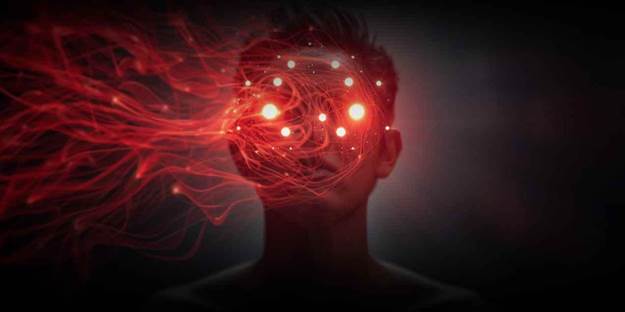Living with intractable migraine without status migrainosus can be deeply disruptive, often leaving individuals struggling with persistent pain and limited treatment relief. Unlike typical migraine attacks, this condition resists standard therapies and demands a deeper understanding of its underlying mechanisms.
In this article, we explore the diagnostic challenges, treatment resistance, and innovative management approaches that healthcare professionals use to support patients with chronic, unresponsive migraine episodes. Readers will gain insights into current research, practical clinical strategies, and the importance of early intervention to improve quality of life. By examining both medical and lifestyle-based solutions, this discussion aims to provide a clearer path for those affected and for practitioners seeking more effective migraine care.
Understanding Intractable Migraine Without Status Migrainosus
Intractable migraine without status migrainosus refers to a severe form of migraine that does not respond to conventional treatments and persists despite multiple therapeutic attempts. Unlike typical migraines, these episodes often return frequently, last for hours, and severely impact the patient’s quality of life. In clinical practice, understanding this condition is essential because it challenges both diagnosis and treatment strategies. Patients often describe persistent throbbing pain, nausea, and heightened sensitivity to light or sound, making everyday tasks difficult.
Definition and Clinical Overview
This condition, sometimes referred to as refractory migraine, occurs when attacks continue despite appropriate use of preventive and acute medications. It differs from status migrainosus, which involves migraine lasting more than 72 hours. Instead, this type presents as recurring yet treatment-resistant headaches that fail to remit completely between attacks.
Key diagnostic features include:
• Repeated migraine episodes unresponsive to standard therapy
• Moderate to severe headache intensity
• Presence of associated symptoms like photophobia, phonophobia, and nausea
• No structural or secondary cause identified on imaging
Recognizing these signs early allows clinicians to design personalized treatment plans and avoid unnecessary medication overuse.
Historical and Clinical Background
Migraines have been documented since ancient civilizations, yet the concept of intractable migraine evolved with advancements in neurology. Historically, migraine treatment focused on symptom control rather than prevention. Over time, medical research identified different subtypes, including those resistant to medication. This evolution helped clinicians distinguish between ordinary migraines and those classified as intractable.
The International Classification of Headache Disorders (ICHD) formally defined intractable without status migrainosus to clarify diagnostic boundaries and aid in research. The modern understanding of this condition now integrates genetics, neurovascular theories, and environmental influences, making diagnosis more precise.
Importance of Accurate Diagnosis
Correct identification is critical because misdiagnosis can lead to ineffective treatment and unnecessary side effects. Clinicians must differentiate between medication-overuse headache, chronic migraine, and intractable forms. Early recognition helps prevent the progression of migraine frequency and intensity.
Accurate diagnosis also benefits:
• Treatment planning – selecting effective medication combinations
• Patient counseling – helping individuals manage triggers and expectations
• Research advancement – allowing better understanding of resistance mechanisms
Diagnostic Challenges
Diagnosing this condition remains complex because symptoms overlap with other headache disorders. Factors such as genetic predisposition, hormonal changes, and lifestyle habits complicate assessment. Many patients experience overlapping conditions like anxiety or depression, which further obscure clinical clarity.
Common diagnostic barriers include:
• Inconsistent response to therapy
• Overlapping migraine subtypes
• Lack of clear biomarkers for migraine resistance
• Psychological and environmental factors influencing pain perception
Neurologists often rely on headache diaries, imaging, and patient history to reach an accurate conclusion.

Management and Treatment Approaches
Effective management involves a multimodal approach that targets both physiological and behavioral aspects of the condition. Since traditional medications may fail, clinicians combine pharmacologic, non-pharmacologic, and lifestyle strategies.
1. Pharmacological Interventions
• Preventive medications such as beta-blockers, antiepileptic drugs, or CGRP inhibitors
• Use of triptans or gepants for acute management
• Limited reliance on opioids due to dependency risks
• Botulinum toxin injections in chronic cases
2. Non-Pharmacological Therapies
• Cognitive-behavioral therapy (CBT) to reduce stress triggers
• Biofeedback and relaxation techniques to improve coping mechanisms
• Physical therapy to manage tension-related pain
• Neuromodulation devices that stimulate specific nerves to interrupt migraine pathways
3. Lifestyle Modifications
• Maintaining regular sleep and meal schedules
• Staying hydrated and avoiding known dietary triggers like caffeine or alcohol
• Engaging in low-impact physical activities such as yoga or walking
• Tracking headache patterns to identify early warning signs
These combined strategies aim to minimize the severity, frequency, and overall burden of the disease.
Benefits of a Comprehensive Management Plan
A personalized care plan empowers patients and improves treatment outcomes. With consistent monitoring and open communication between patients and healthcare providers, symptom control becomes more achievable.
Benefits include:
• Fewer emergency visits due to prolonged headaches
• Better medication adherence and tolerance
• Enhanced quality of life and emotional well-being
• Reduced absenteeism from work or school
By focusing on both prevention and intervention, clinicians can provide lasting relief even in complex cases.
Real-World Clinical Examples
Case studies show that patients who adopt integrated management approaches often experience reduced migraine frequency. For instance, a patient unresponsive to triptans may benefit from adding CGRP-targeted therapy combined with behavioral techniques. Another example involves using neuromodulation in patients intolerant to medications, resulting in significant improvement in daily functioning.
Future Directions and Research Insights
Current research continues to explore the neurobiological basis of intractable migraine without status migrainosus. Scientists are investigating genetic markers, neuroinflammation, and hormonal influences that contribute to treatment resistance. Advances in precision medicine may soon allow customized therapies targeting individual patient profiles.
Promising areas of development include:
• Next-generation CGRP inhibitors with longer efficacy
• Non-invasive brain stimulation devices
• Digital tools and apps for headache tracking and telemedicine follow-up
• Nutritional and gut-brain axis research linking diet to migraine control
Conclusion
Managing intractable migraine without status migrainosus requires patience, accurate diagnosis, and a personalized treatment approach. Understanding its unique challenges helps both patients and healthcare professionals create more effective strategies for long-term relief. Through a combination of medical therapies, lifestyle changes, and ongoing research, it is possible to reduce the frequency and intensity of symptoms. As awareness and innovation continue to grow, those affected can find hope in emerging treatments. To stay informed about the latest advances in intractable migraine without status migrainosus, continue exploring trusted medical sources and expert guidance.





